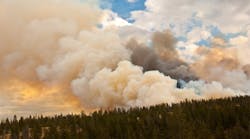Extreme Weather Events Linked to Increased Foreclosures
Mortgage lenders have traditionally relied on homeowners insurance to protect against natural disasters. However, as climate disasters grow more frequent and costly, this safety net is weakening.
Rising insurance premiums, reduced availability of wind and wildfire coverage, and gaps in flood insurance are making it harder for homeowners to stay protected. In many cases, these challenges are leading to more foreclosures, according to a recent report from climate-risk data provider First Street. The study shows that climate-related foreclosures could cost banks $1.21 billion in 2025, and this could rise to $5.36 billion by 2035 as disasters worsen and insurance costs grow. In fact, over the last four decades, annual costs from climate-related events have grown by 1,580%.
Flooding is the primary culprit of rising costs and increasing foreclosure rates. Properties in regions outside of FEMA-designated flood zones—where insurance isn’t required—have significantly higher default rates compared with insured areas. Across analyzed flood events, the report found that damaged properties outside of FEMA-designated areas experience foreclosure increases averaging 51.8 percentage points more than similar, damaged properties within FEMA-designated flood zones.
Despite programs like the National Flood Insurance Program (NFIP), flood events expose significant protection gaps and rising costs (average NFIP claims up 223% since early 2000s despite the $250K structural limit remaining unchanged), increasing risks for mortgage lenders and investors in mortgage-backed securities and challenging the financial system's assumption of stability.


